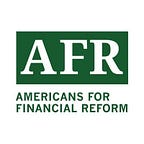Safe, Affordable Housing is a Foundation for Gender and Racial Justice
by Emily Hirtle, Policy Program Assistant for AFR
According to the National Fair Housing Alliance, over 4 million instances of housing discrimination occur each year.[1] Although the Fair Housing Act of 1968 made housing discrimination on the basis of sex, race and other protected categories illegal,[2] the typical home headed by a woman is still consistently undervalued compared to the typical home headed by a man.[3] And trans women, especially trans women of color, experience increased housing instability due to the intersecting forms of discrimination they face.[4] Leading up to the 2008 foreclosure crisis, women of color were disproportionately likely to be steered into subprime mortgages.[5] Beyond the disadvantages they face directly with housing, other forms of discrimination compound to make safe, quality housing less affordable and less available to women, especially women of color.[6] As a consequence of the Covid economic crisis, which some have dubbed the “she-cession”,[7] experts fear that women will lose the gains they’ve made in homeownership over the past three decades.[8] That’s why this April, which is both National Fair Housing Month[9] and Black Women’s History Month,[10] AFR is highlighting the ongoing need for equitable access to safe, affordable housing, as a foundation for gender and racial justice.
During the Covid economic crisis, gender and racial disparities in housing have only increased. In December 2020, Black women were over two times more likely than white men to be behind on their mortgage payments.[11] Over the course of 2020, the leisure and hospitality, education, and health services industries, all of which include a majority of women workers, have experienced more job losses than any other sector. As of November 2020, women held 5.3 million fewer jobs than they did when the pandemic started in February, compared to a 4.6 million job decrease for men.[12] 100% of job losses in December 2020 were women.[13] The unemployment rate for Black and Latinx women has been consistently higher than that of white women throughout 2020.[14] With such drastic losses in income, it is no surprise that the number of girls, women, and transgender and gender non-conforming people that are homeless is expected to rise as the fallout from the pandemic continues.[15] The disproportionate impact that the Covid economic crisis has had on women makes advocating for affordable housing more necessary than ever.
Furthermore, housing and domestic and intimate partner violence are inextricably linked. More than a third of women in the United States experience intimate partner violence,[16] and the rates of violence are still higher for women of color,[17] as well as for respondents to the 2015 US Transgender Survey.[18] Rates of domestic violence have only been rising during the Covid crisis.[19] Domestic violence is a leading cause of homelessness in women,[20] and lack of affordable housing is a deterrent of survivors leaving abusive partners.[21] Abusive partners can also coerce women into mortgages that they do not want or cannot afford. Fearful of further violence, survivors are forced to sign the papers. Then when the abuser does not make the mortgage payments and the bank forecloses, the survivor is left with a severely damaged credit score, as well as economic and housing insecurity.[22] The mortgage itself becomes a tool for financial abuse that can lead to homelessness. Fair housing must center affordability and safety.
Secretary of the Treasury Janet Yellen testified to Congress, ”We know that when the foundations of someone’s life falls apart, when they lose the roof over their head or the ability to eat dinner every night, the pain can weigh on them for years, their earnings potential is permanently lowered.”[23] Housing is a foundation to safety, success, and livelihood. For those who are already struggling and bearing the burdens of discrimination, access (or lack there of) to safe and affordable housing is life-changing. Fair housing is a consumer financial justice priority,[24] a gender and racial justice priority, a tool to support survivors of domestic violence, and a human right.[25] That’s why you should help advance justice by calling on your representatives to support programs for first-time homebuyers that make homeownership more accessible.
________________
[1]https://nationalfairhousing.org/report-housing-discrimination/
[3] https://www.zillow.com/research/shecession-pandemic-women-2020-28104/
[4] https://www.mdpi.com/1660-4601/16/22/4521/htm
[5] https://nwlc.org/wp-content/uploads/2020/11/NWLC-Comment-for-Taskforce-RFI-CFPB-2020-0013.pdf
6] https://nwlc.org/wp-content/uploads/2021/02/Gender-and-Racial-Justice-in-Housing.pdf
[7] https://www.zillow.com/research/shecession-pandemic-women-2020-28104/
[9] https://www.hud.gov/FHM2021#:~:text=April%20Is%20National%20Fair%20Housing%20Month!
[10] http://www.blackwomenshistorymonth.com/
[11] 14.4% of Asian, non-Hispanic women reported being behind on their mortgage payments, as well as 14.5% of Black, non-Hispanic women, 19.1% of Latinas, 8.1% of white, non-Hispanic women, and 6.7% of white, non-Hispanic men.
https://nwlc.org/wp-content/uploads/2020/12/pulseFS12.pdf
[12] https://www.cnn.com/2020/12/17/economy/job-losses-women-pandemic/index.html
[14] In February 2020, the unemployment rate was 4.9% for Black women, 4.8% for Latinx women, and 2.8% for white women. In November 2020, these rates were 9%, 8.2%, and 5.4%, respectively. Notably, Asian American and Pacific Islander women and Indigenous women were not included in these statistics from the US Bureau of Labor Statistics.
https://www.cnn.com/2020/12/17/economy/job-losses-women-pandemic/index.html
[15] https://nlihc.org/sites/default/files/TalkingPoints_GenderJusticeAndHousing.pdf
[16] https://www.thehotline.org/stakeholders/domestic-violence-statistics/
[17] African American women experience intimate partner violence at a rate 35% higher than white women. Somewhere between 41–60% of Asian and Pacific Islander women experience domestic violence. 37.5% of Native American and Alaska Indian women experience intimate partner violence. http://www.doj.state.or.us/wp-content/uploads/2017/08/women_of_color_network_facts_domestic_violence_2006.pdf
[18] 54% of respondents to the 2015 US Transgender Survey experienced some form of intimate partner violence.
https://transequality.org/sites/default/files/docs/usts/USTS-Full-Report-Dec17.pdf
[20] https://nlchp.org/wp-content/uploads/2018/10/DV_Fact_Sheet.pdf
[21] https://nwlc.org/wp-content/uploads/2021/02/Gender-and-Racial-Justice-in-Housing.pdf
[22] http://stories.texasappleseed.org/abuse-by-credit-the-problem-of-coerced-debt-in-texas-
[23] https://www.bgov.com/core/news/#!/articles/QQG1I18JMDC0
[25] https://www.ohchr.org/documents/publications/fs21_rev_1_housing_en.pdf
